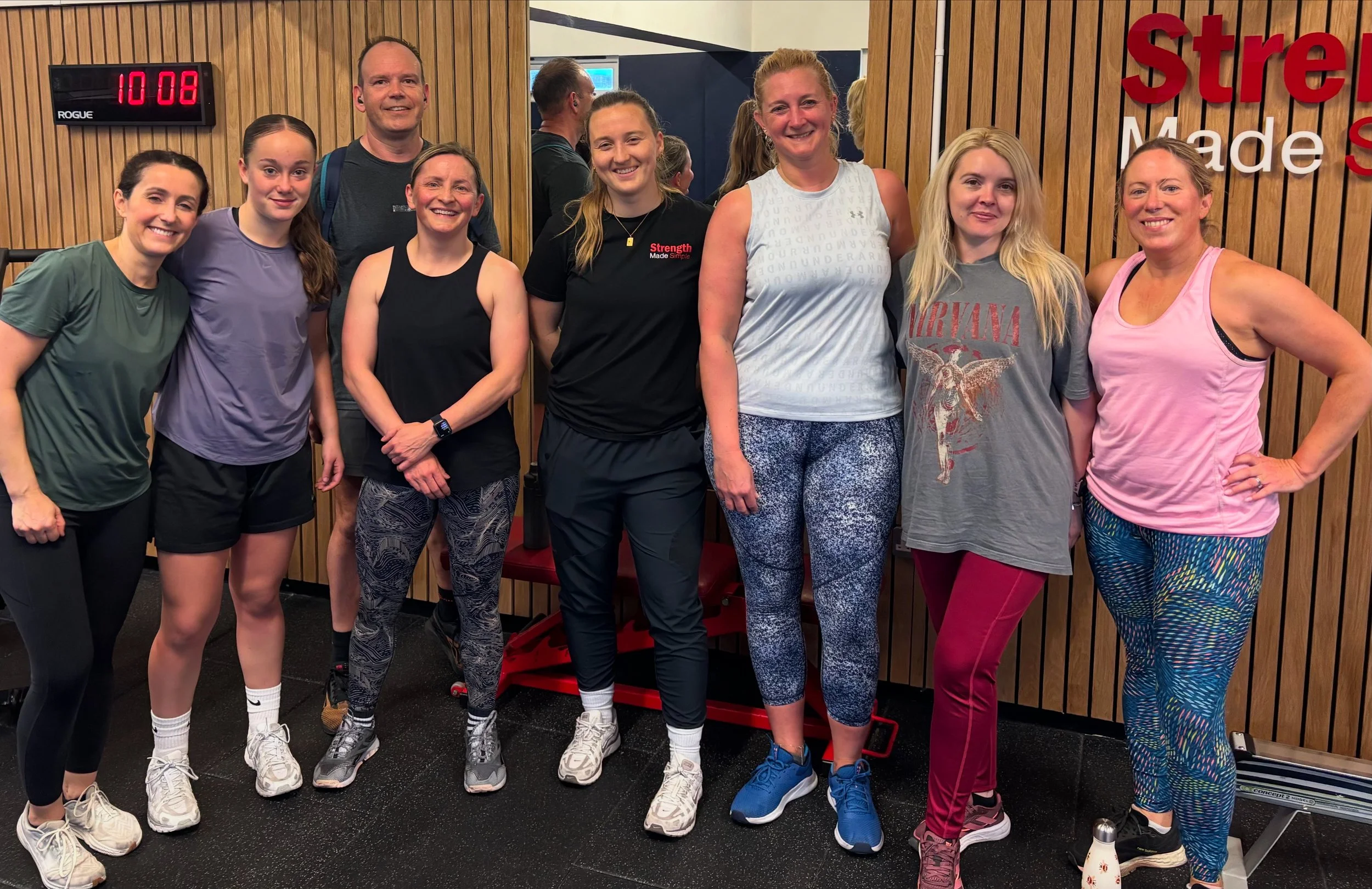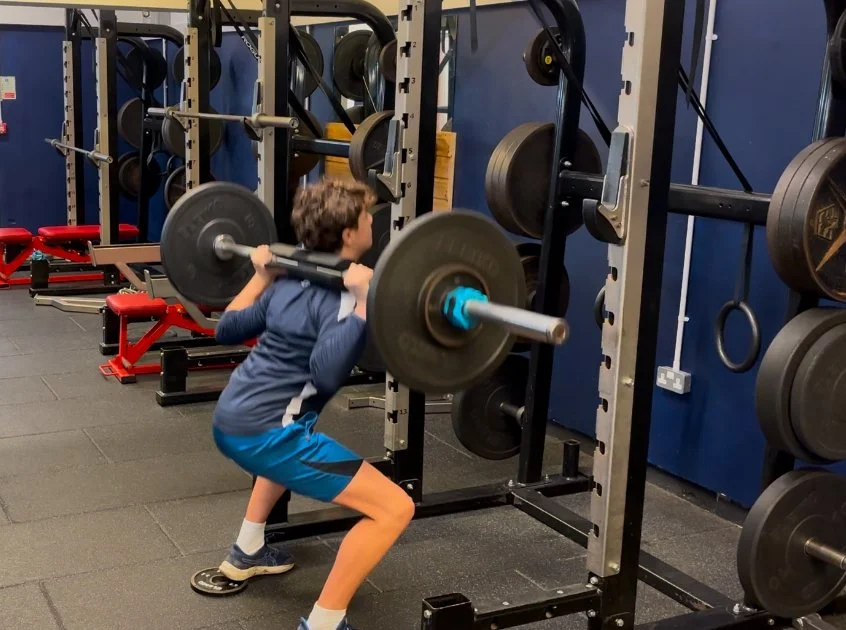
news & views - SMS blog
A family member told me a story this week that perfectly captures why so many people feel nervous about starting personal training — and why choosing the right coach matters more than you think. And don’t worry — this did NOT happen in a Bedford gym.
But it did happen, and it’s worth talking about.
When most people think about transforming their body — losing fat, building muscle, getting fitter — they focus on the obvious things:
Training harder
Eating cleaner
Adding more cardio
Doing “extra” workouts
But the real magic? The thing that separates people who make progress from people who spin their wheels? 👉 Recovery.
Every month, fitness magazines churn out the same recycled headlines: “6 Exercises You Must Do This Summer!” “The One Move Every Athlete Needs!” “Secret Workout Pros Don’t Want You To Know!” And every month, people get sucked straight back into the trap. Let me save you some time (and frustration): Exercise selection is massively overrated. Yes — I said it. And if more people understood this, they’d stop second-guessing themselves and finally start progressing.
If you’re a young athlete in Bedford — rugby, football, netball, hockey, athletics, rowing (or anything in between) — you already know that sport is more competitive than ever. Everyone trains hard. Everyone wants a spot. Everyone wants to stand out. But here’s the secret most young athletes never learn: It’s not the athlete who trains the hardest… it’s the athlete who trains the smartest who gets ahead. At Strength Made Simple, we help young athletes build the foundations that last: strength, speed, power, movement quality, and resilience. The things that make you not only better now, but better for the long run. Here’s what you need to know if you want to train like a serious athlete — and avoid the common mistakes that hold young players back.
If you feel like you’re “eating pretty well” but not seeing the results you want — don’t worry. Most people aren’t failing because they lack willpower or discipline. They’re failing because the nutrition advice out there is confusing, contradictory, and often completely unrealistic for real life. At Strength Made Simple, we spend a lot of time helping busy adults simplify their nutrition so they can look and feel better without dieting, restriction, or stress. Here are the 3 biggest mistakes we see time and time again — and exactly how to fix them.
If you’ve ever started a fitness journey and felt overwhelmed by conflicting advice, confusing jargon, or wildly different opinions… welcome to the club. At Strength Made Simple, we’ve heard every question under the sun — from the brilliant to the bizarre — and we love helping people cut through the noise. So here are the most common questions we get from people who want to get stronger, leaner, and feel better… answered simply. No nonsense. No overcomplication. Just the truth.
Most people think transformation happens in one big dramatic moment. A perfect Monday. A strict meal plan. A brutal workout that “changes everything.” But real change — the kind that actually sticks — never looks like that. It’s quieter. Simpler. And a lot less glamorous. At Strength Made Simple, we’ve coached hundreds of people in Bedford, and the pattern is clear: The people who win long term are the ones who get 1% better, not 100% perfect. Here’s why that mindset works… and how you can start using it today.
“Functional training” — it’s one of those buzzwords you’ve probably seen splashed across gym walls and Instagram posts. But what does it actually mean? Does it involve balancing on a Bosu ball while doing a one-legged kettlebell press?
Or throwing a sandbag across the room while shouting “functional!” for good measure? At Strength Made Simple, we like to strip away the fluff.
Search “CrossFit near me” and you’ll find plenty of boxes (that’s CrossFit-speak for gyms) promising intense workouts, ripped bodies, and camaraderie forged in sweat. And to be fair — CrossFit deserves credit. It’s got millions of people lifting barbells, doing pull-ups, and chasing better fitness. That’s a big win in our book. But… if you’re reading this, you might not be looking to compete in the CrossFit Games. You probably just want to look better, feel stronger, and move without aches and pains — without needing to learn how to do butterfly pull-ups or snatch a barbell overhead at lightning speed. That’s where Strength Made Simple comes in.
You’re eating healthy meals. You’re training regularly. You’re trying your best. But the scales aren’t shifting — or worse, you’re slowly creeping up. Chances are, the problem isn’t your main meals… It’s the little extras between them. Those handfuls of crisps. That spoonful of peanut butter. The biscuit with your tea. The latte on the go. They don’t feel like much, but they add up — fast. At Strength Made Simple, we call it “kindness eating.” You’re not overeating because you’re lazy or greedy — you’re doing it to comfort yourself, reward yourself, or “take the edge off.” Sound familiar? Let’s fix it.
Ask ten trainers what the “best” rep range is, and you’ll probably get ten different answers.
3–5 for strength.
8–12 for muscle.
15+ for endurance.
Sound familiar? But here’s the truth…
You’ve cleaned up your diet. You’re training hard. You’re even getting your steps in. But the scales aren’t moving. The fat isn’t shifting. You’re stuck. One of the biggest culprits we see at Strength Made Simple?
👉 Liquid calories. They don’t fill you up, they don’t fuel your body well, and they’re sneaky enough to add hundreds of calories to your day without you even noticing. Let’s break it down.
Do you want to get fitter, stronger, or just feel better in your own skin — but you’re stuck on the first step. You’re not alone. Many people who walk through our doors at Strength Made Simple tell us the same thing: “I know I need to do something… I just don’t know where to start.” The good news? Getting started doesn’t have to be complicated. In fact, keeping it simple is the best way to succeed. Here’s how to go from “thinking about it” to actually training and enjoying it.
If you’re a young athlete in Bedford — maybe you play rugby, football, netball, or another sport — you probably spend hours each week training and competing. But here’s the truth: The athletes who stand out aren’t just the ones who train hardest on the pitch. They’re the ones who build strength, speed, and resilience off it. That’s where strength and conditioning comes in. At Strength Made Simple, we help young athletes take their game to the next level with smart, age-appropriate training that builds the qualities their sport demands.
Once you hit 40, the way you train, eat, and recover starts to matter more than ever. You’re not old — but you are at a tipping point. From here, you can either start to feel slower, weaker, and more restricted… Or you can get ahead of the curve and build a body that stays strong and capable for decades. At Strength Made Simple, we work with loads of over-40s in Bedford who want to feel better, move better, and future-proof their bodies. And if we had to boil down our approach to the three most important habits?
If you’re over 40 and want to feel strong, energetic, and capable for decades to come… there’s one nutrient you can’t afford to ignore: protein. It’s not just for bodybuilders. It’s the foundation for:
Building and maintaining muscle
Supporting bone health
Boosting recovery
Keeping you lean
And yes — even helping you live longer
Strength Made Simple Blog – Bedford Strength and Conditioning. What if the secret to a longer, healthier life wasn’t just about what happens in the gym? What if it had more to do with your daily habits, your relationships, your food, and your sense of purpose?That’s exactly what researchers found when they studied the Blue Zones—five regions in the world where people live significantly longer, healthier lives than the global average. At Strength Made Simple, we help busy Bedford locals train for performance and for longevity. So here’s what the Blue Zones can teach us—and how we build it into our approach to strength, fitness, and life.
Let’s be honest: your body at 40+ isn’t the same as it was at 25. You’ve got more responsibilities. Less recovery time. And maybe a few more creaks and groans in the morning. But here’s the good news: You can still get leaner, stronger, and more energetic than you’ve felt in years — and you don’t have to hate the process. At Strength Made Simple, we coach loads of people in Bedford who are over 40 and crushing it. Here’s how they do it (and how you can too).
Ever feel like fitness has become overly complicated? Every week there's a new trend, a miracle diet, or a “must-try” hack that promises the world but leaves you more confused than when you started. At Strength Made Simple, we believe something different…It doesn’t need to be complicated. In fact — it shouldn’t be. We work with people across Bedford who are tired of jumping through hoops and just want to look, feel, and move better. What’s the secret? It’s not a secret at all. It’s getting strong — one step at a time — with simple, smart, sustainable training and nutrition.
Do you ever find yourself struggling to find healthy food options when eating out in Bedford? Whether you’re on a day out or passing through on your commute, it can feel like there are limited choices, especially when you’re surrounded by chain restaurants or fast food spots. Don’t worry – with a few simple strategies, you can make better decisions even when your options seem less than ideal.
When most people hear “strength and conditioning,” they think of elite athletes and hardcore gym sessions. But here’s the truth:
Strength and conditioning is for everyone—especially if you want to look, feel, and move better.
At Strength Made Simple, we help people across Bedford train smart, get strong, and build real fitness that lasts—no matter your age, experience, or current fitness level.
Here’s why strength and conditioning might be exactly what you're looking for.
In today’s world of instant gratification, where results are just a click away, the expectation for rapid transformation has seeped into every corner of our lives—especially when it comes to health and fitness. Yet, this is precisely where patience is not just a virtue but a critical component of success.
Ever tried to do something you used to be able to do… but couldn’t? It hits hard when you realise your body doesn’t move like it used to. But here's the truth: you can get it back. And when you do? It’s not just satisfying. It’s empowering.
Every January and every Monday, people start new diets. And by Friday? They’ve “fallen off.” Not because they’re lazy. Not because they lack willpower. But because most diets are built on restriction, not results. At Strength Made Simple, we help busy people stop starting over by building habits that work in the real world—and that includes nutrition. Here’s why most diets fail, and what we do instead.
When it comes to achieving fitness goals—whether building muscle, increasing strength, or improving endurance—two foundational principles are essential: progression and overload. These principles guide how we can continually challenge our bodies, prompting adaptation and growth. Let’s break down what they mean, why they’re important, and the various methods you can use to ensure you’re making steady progress.
If you're over 50 and wondering whether it's “too late” to start exercising, you're not alone. This is one of the most common questions we hear — and one of the most important to answer.
The short version? No, you are absolutely not too old to start working out.
In fact, starting a fitness routine later in life might be one of the best decisions you ever make for your health, confidence, and independence.
If you’re looking to lose weight fast, you’re not alone. Whether you have a big event coming up, or you simply want to kickstart your weight loss journey, the idea of shedding pounds quickly is appealing. But while losing weight quickly is possible, it’s important to do it safely and sustainably. Extreme crash diets may give short-term results, but they often lead to rebound weight gain and can be harmful to your health.
Every January and every Monday, people start new diets.And by Friday? They’ve “fallen off.”Not because they’re lazy. Not because they lack willpower.
But because most diets are built on restriction, not results.At Strength Made Simple, we help busy people stop starting over by building habits that work in the real world—and that includes nutrition.Here’s why most diets fail, and what we do instead.
When most people think about improving their fitness, they tend to focus on pushing their absolute limits—the heaviest weight they can lift, the fastest mile they can run, or the hardest workout they can survive. This approach is often called “raising the ceiling.” While it can lead to short-term victories, it often comes at the cost of burnout, injury, or inconsistent results.
If you're trying to lose fat, chances are you've been told to do more cardio and eat less. And sure — walking, running, and watching your diet help. But if you've tried all that and still feel stuck, tired, or soft... you're not alone.
The truth is, cardio isn’t the secret weapon for fat loss — strength training is.
Let’s break down why.
























